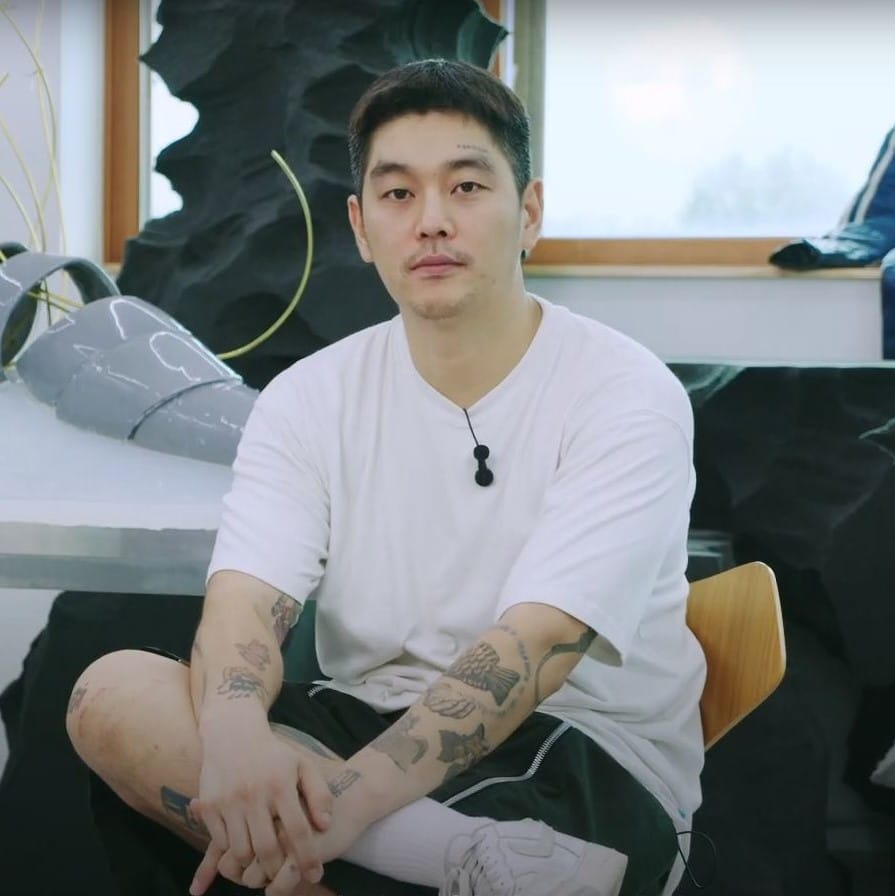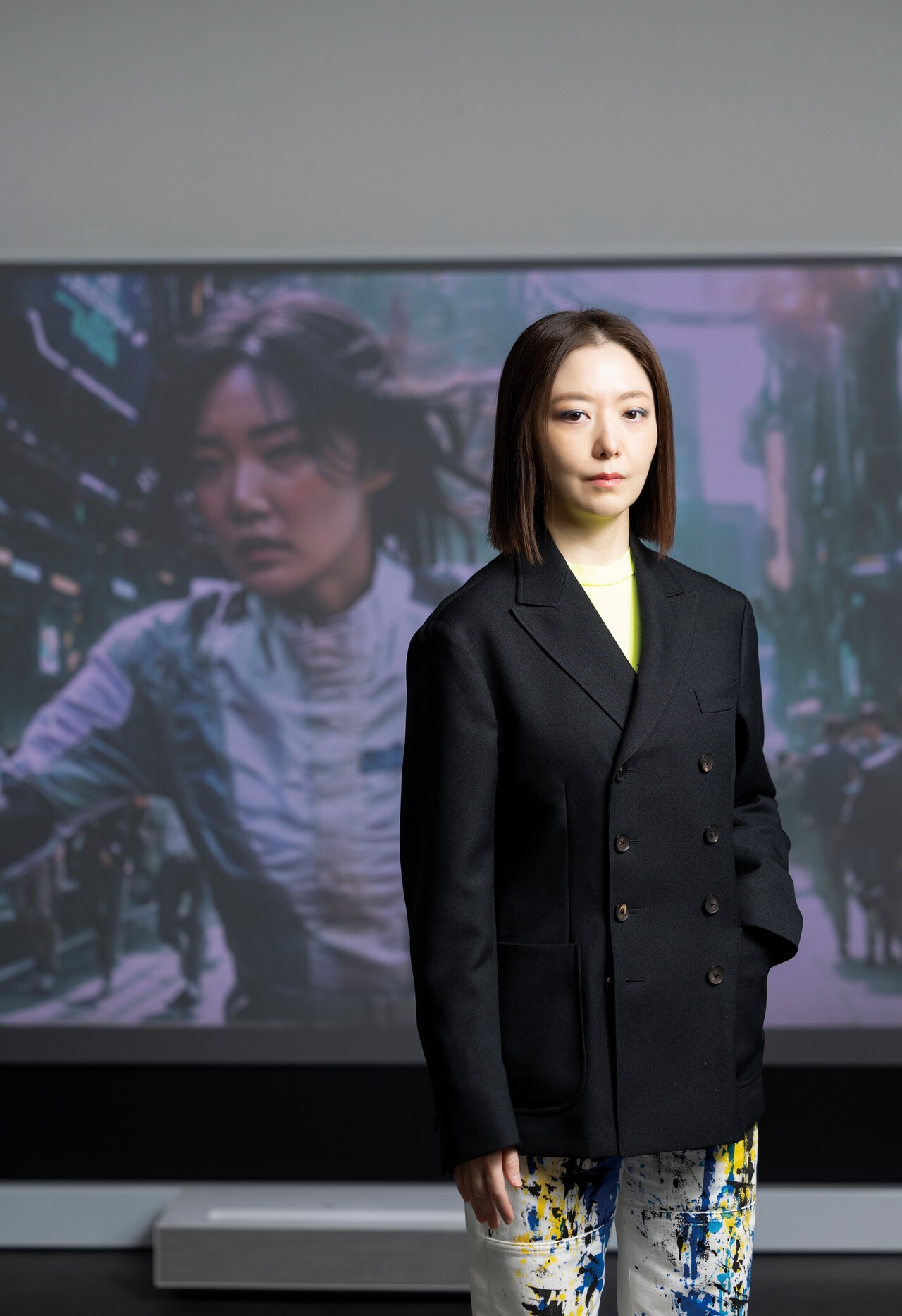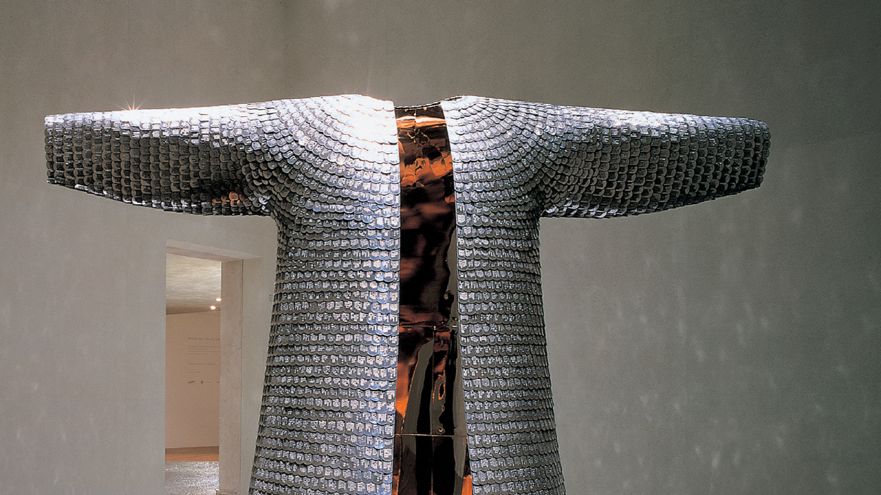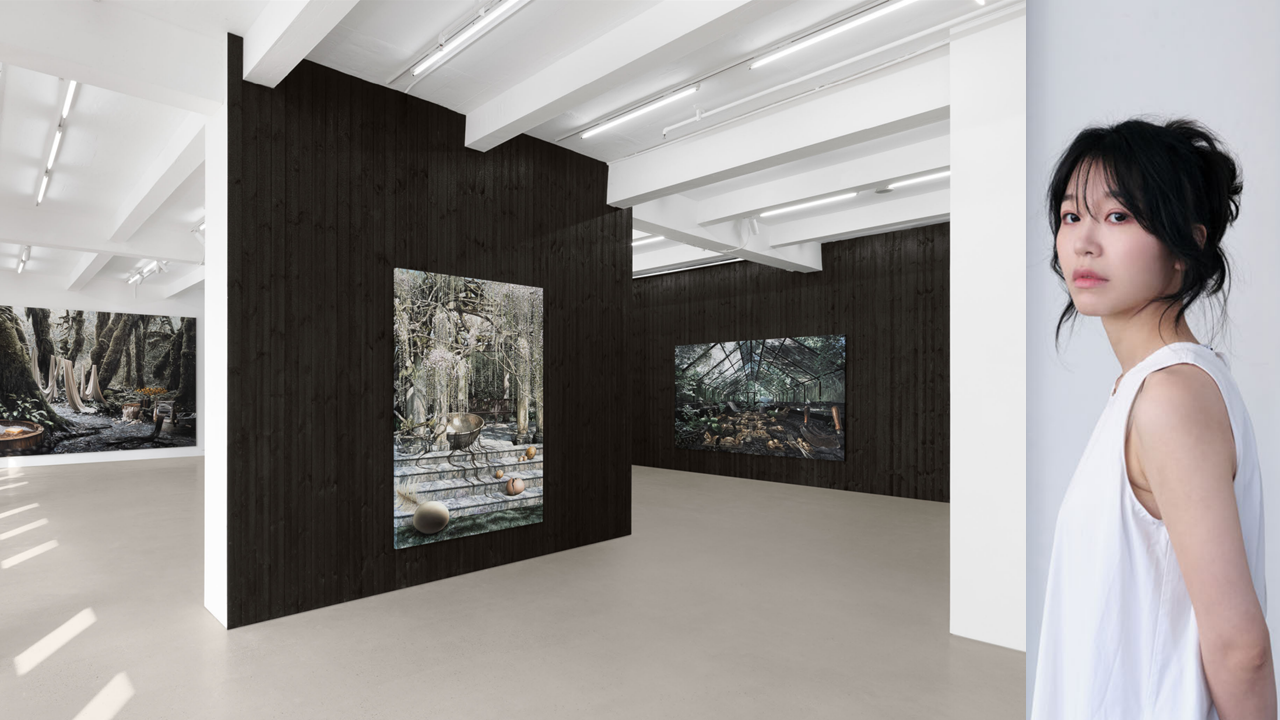Artist Jihyun Jung, who has been named the 2023 Kimsechoong Sculpture Award for Young Artists laureate, explores the urban environment to discover residual products of the city. He explores the function and movement of sculpture through the use of discarded industrial materials.

Artist Jihyun Jung. Courtesy of the Kimsechoong Museum
The artist Jihyun Jung has been named the 2023 Kimsechoong Sculpture Award for Young Artists laureate. Jung explores the urban environment to discover residual products of the city that we encounter so often that they go unnoticed. Sometimes, the city’s byproducts include old statues that blend into the urban surroundings, escaping the notice of city dwellers, as well as discarded industrial materials. Jung utilizes these subjects to experiment with the function and movement of sculpture.
He frequently uses industrial materials such as aluminum mesh, urethane foam for building insulation, H-shaped steel, and LED lights. Following the logic of capitalism, these industrial materials are produced out of necessity, but they are also easily discarded in urban areas. For the artist, the idea of these materials being used and discarded according to their usefulness mirrors the existential crisis experienced by individuals in contemporary society.
A city comprises a collection of various objects, each possessing distinct shapes and purposes, which come together to reconstruct the urban landscape. The artist explores objects that exist within this integrated urban space yet are often neglected and rendered invisible to the public eye as if they no longer exist. One example is the statues that adorn the city, such as the statue of Jeon Bongjun on Jongno Boulevard, which often goes unnoticed. Jung reconstructs the components of a city into works of art using industrial materials, infusing them with new meaning and context.
 Installation view of Jihyun Jung’s ‘Filing Public Parts (공공조각파일)’ (2018) in “Sculptural Impulse” at the Buk-Seoul Museum of Art, Seoul. SeMA Collection. Photo by Aproject Company.
Installation view of Jihyun Jung’s ‘Filing Public Parts (공공조각파일)’ (2018) in “Sculptural Impulse” at the Buk-Seoul Museum of Art, Seoul. SeMA Collection. Photo by Aproject Company.For Filing Public Parts (2018), which was on view at the Buk-Seoul Museum of Art’s group exhibition Sculptural Impulse, Jung re-created a commonplace street statue out of meshed aluminum sheets to create a new monument. The public statue was a nude female sculpture sitting in a crouched position against the wall of a building near his studio. To the artist, this statue was out of place in its surroundings due to its unusual shape and size. Jung replicated the statue using dozens of sheets of lightweight, thin aluminum mesh, stacking them high in the museum’s exhibition space.
The artwork prompts viewers to reflect on the conventional method of sculpting or the long history of the genre, as well as the sociocultural implications of neglected public sculptures in urban spaces.
This aspect of Jung’s work also connects it to that of British sculptor Henry Moore (1898–1986), who was concerned with abstraction in sculpture and explored the materiality of sculptural materials. Inspired by the human body and natural forms, Moore created simplified and abstract figures, often made from natural materials.
Jung, influenced by Moore’s work, incorporates urban materials into his own works, recontextualizing them and establishing new relationships. Through Jung, objects that have outlived their usefulness in the city retain their original form but lose their original function and become autonomous, taking on new forms and uses that the artist can alter at any time.
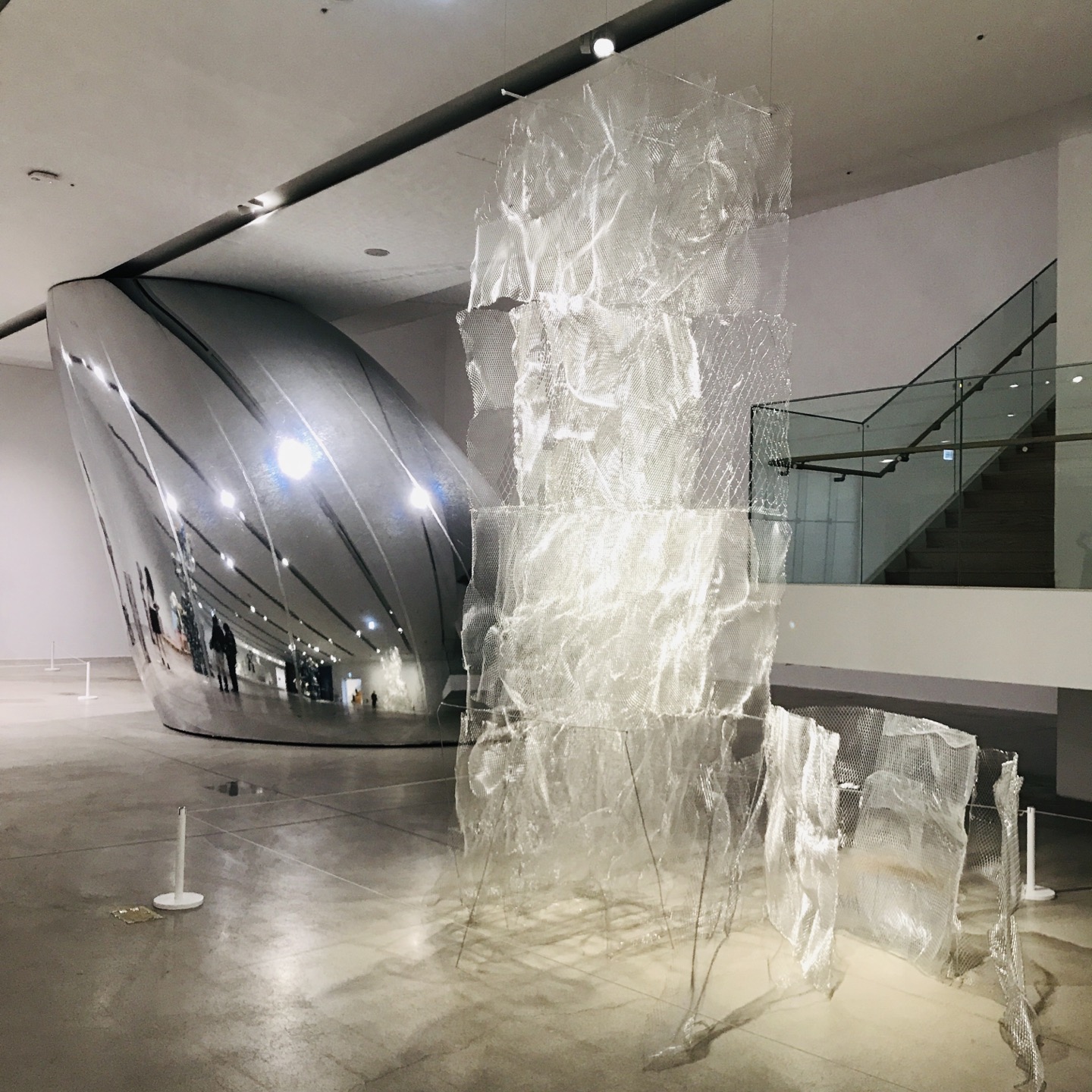 Installation view of Jihyun Jung’s ‘Filing Public Parts (공공조각파일)’ (2018) in “Sculptural Impulse” at the Buk-Seoul Museum of Art, Seoul. SeMA Collection. Photo by Aproject Company.
Installation view of Jihyun Jung’s ‘Filing Public Parts (공공조각파일)’ (2018) in “Sculptural Impulse” at the Buk-Seoul Museum of Art, Seoul. SeMA Collection. Photo by Aproject Company.Jung has had solo exhibitions at Incheon Art Platform (Incheon, 2022), Atelier Hermès (Seoul, 2019), Doosan Gallery (Seoul, 2016), Doosan Gallery (New York, 2015), Insa Art Space (Seoul, 2013), Project Space Sarubia (Seoul, 2011), and Gallery Scape (Seoul, 2010).
His major group exhibitions include Sculptural Impulse, held at the Buk-Seoul Museum of Art in 2022; Kak, at the Hite Collection; and Stop Worrying and Love the Bomb, held at the Seoul Museum of Art in 2021.
The Kimsechoong Sculpture Award will be awarded to Kim Yunshin (b. 1935), and the Kimsechoong Sculpture Award for Young Artists will be awarded to Jihyun Jung (b. 1986). Yuri Seo (b. 1973) will be awarded the Korean Art Writing and Publishing Award for her book Dislocation and Counter-Subjectification: A History of Minjung Art in the 1980s Korea (2022).
The jury for the Kimsechoong Sculpture Award and the Kimsechoong Sculpture Award for Young Artists was composed of Ahn Kyuchul (chairman of the jury and a former professor at the Korea National University of Arts), Lee Yong Deok (professor at Seoul National University), Lee Soo Hong (professor at Hongik University), Moon Joo (professor at Seoul National University), and Jo Eun-jeong (art critic). The award ceremony will be held on June 24 at 3 p.m. at the Kimsechoong Museum in Yongsan-gu, Seoul.
The Kimsechoong Sculpture Award was established in 1987 to honor the work of Kim Se-Choong (1928–1986), a member of the first generation of modern Korean sculpture. The sculptor’s most famous work is the statue of General Chungmugong Yi Sunsin at Gwanghwamun, and he served as the director of the National Museum of Contemporary Art. The Kimsechoong Sculpture Award has honored 80 sculptors so far this year.







